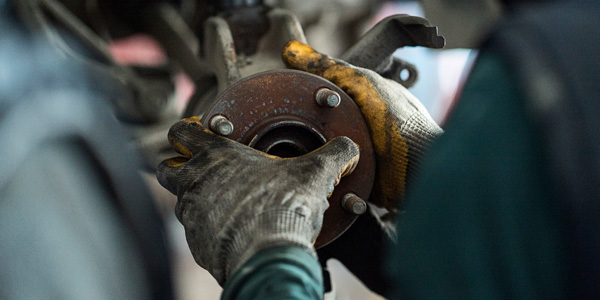
Today’s wheel bearings are made to last, but sometimes they don’t roll on as long as they should. Do you know the signs and symptoms of a failing bearing? Did you know that a bad wheel bearing also can set off diagnostic trouble codes? We’ll explore what you need to know and how you can tell if your customer needs the bearing replaced or not.
On most late-model vehicles, the wheel bearings are sold as a complete hub-unit assembly that includes a sealed bearing, flange and an ABS wheel-speed sensor. If the bearing goes bad on a sealed hub unit, the whole thing needs to be replaced.
Tapered bearings can be found on some older cars and pickups, and even trailers. Tapered bearings need to be preloaded to remove the play but still allow rotation. These bearings must be taken out, cleaned and repacked with grease and tightened to the specified preload. Another type of bearing is the pressed double-row bearing that’s found on some front-wheel-drive applications. These bearings must be pressed in with a hydraulic press.
On a sealed bearing, small steel balls are held inside a metal ring (the race) and are sealed together in a maintenance-free unit that also comes pre-greased. The hub unit contains the bearing, wheel-speed sensor or tone ring and a flange for mounting the wheel and rotor.
While bearings are engineered to handle most normal driving conditions, a pothole, curb or heavy cornering forces (i.e., racing) and high loads can cause the steel balls or rollers to damage the race, which may lead to humming noises at first and then eventual failure.
If you suspect a wheel bearing is about to fail, you may hear a humming sound coming from one of the wheels. You should try to isolate the noise to find out what wheel is making the sound. If there’s a dash light on for ABS or wheel-speed sensor, the play in the bearing may be causing intermittent readings due to the spacing of the magnet and tone ring.
In order to find free play in the bearing, the vehicle should be lifted to inspect, taking the weight off the races. Spin the wheel around, listening for noise and vibration as well as lifting on the wheel in an upward motion to feel if there’s play in the bearing. Note that there may be play from the ball joints or tie rods that may cast doubt over what’s being felt in the bearing. At this time, it’s a good idea to check the wheel-speed wiring harness for damage and to make sure it’s sending voltage.
The wheel-speed sensor produces an AC signal in most vehicles – although some are supplied power – as the wheel rotates. The frequency of the AC signal is used to calculate the wheel speed by the electronic brake-control module (EBCM). When this correlation breaks down, a tech uses a scan tool to pinpoint the issue.
While a sealed bearing is replaced as a complete hub unit with an integrated wheel-speed sensor, pressed bearings are installed with a hydraulic press using a bearing race driver. Some bearings include a wheel-speed sensor magnet on one side that fits in between parallel bearings; be sure to install the magnet in the right direction, or the sensor might not work.











